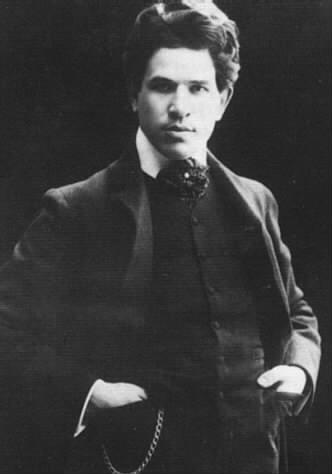Published in the April 29th issue of the Elmhurst College Leader.
---
Album: Bach: Famous Transcriptions—Leopold Stokowski
Artist(s): Leopold Stokowski, Symphony Orchestra
For many people, Leopold Stokowski will forever remain the superbly histrionic conductor-with-the-amusing-hair who shook hands with Mickey Mouse in Fantasia and was occasionally parodied by Bugs Bunny. Given such unquestionably excellent credentials, it may seem strange to learn that Stokowski has long been out of favor in musical circles, and is commonly regarded as something of a charlatan.
While there is some truth to this view (most easily demonstrated by the English-born conductor’s entirely contrived Slavic accent), it sells the maestro very short—little now is said of his seemingly unique ability to draw a lush, burnished tone from even lesser orchestras, so distinctive and evocatively rich that it was known as the “Stokowski sound.” Worse yet, we seem to have forgotten how he introduced an entire generation of listeners to “classical” music, both through his engaging showmanship and—most blessedly—his own orchestral transcriptions of J.S. Bach.
In our era of “historically informed performance”—manifest in shrill, scratchy interpretations and usually advanced by those of comparable temperament—Stokowski’s huge orchestral transcriptions may seem somewhat out of place. But the solidity of Bach’s musical structures and idiom is such that it can hold up to a variety of approaches. Witness, for example, the Jazz Sebastian Bach albums by the Swingle Singers, or the abominable Switched on Bach synthesizer albums of the 1960’s. In light of such examples, Stokowki’s Bach seems downright purist, but this comparison proves very little—to gauge music by its historical “correctness” (as defined by scholarship’s latest capricious whimsy) entirely misses the point of the art. Ultimately, all music is meant to stimulate the mind and emotions of the listener. Bach wrote great music which does both of these things, and the emotion in his essential idiom is perhaps most directly expressed by charlatan transcriptions, in which the grand gestures of romanticism and the intense precision of baroque forms combine to make music of a most affecting and engaging type.
With notable exception to the Air on a G String—in which Stokowski’s syrupy sonorities miss the lovely innocence of the original—most every transcription and its performance is nearly ideal. The opening C minor Passacaglia and Fugue is a superb example of Stokowski’s deep, organ-like sound, in which—to paraphrase the conductor’s own words—the towering, ‘gothic architecture’ of the original is painted in broad strokes of dramatic color. Komm, süβer Tod and Mein Jesu, was vor Seelenweh both display this same “cathedral” sound, along with an attractive gleam to the strings and an overwhelming sense of deep, emotional piety.
But what’s more striking is just how natural Bach can sound in these romantic trappings. Ein’ feste Burg ist unser Gott, from Bach’s cantata after the Lutheran hymn, uses a brass choir to great effect and is of a similar character to the Act I Prelude of Wagner’s Parsifal. And the “Little” G Minor Fugue—which initially uses a dialogue of reed voices to highlight the counterpoint—builds with an almost maniacal sense of inevitability, weighty without ever lagging, gradually adding orchestration until the fugal subject violently emerges in its final, crashing conclusion. This is music in an almost Beethoven-like spirit, in which the extreme development of material creates “operatic” drama where the “protagonist” finally prevails. In the case of this transcription, the “protagonist” is a maddeningly catchy little tune, and, apparently, a heaven storming villain with a talent for theatrics.
Other cuts display similarly theatrical qualities. The Toccata and Fugue in D minor—easily the best known of Stokowki’s Bach transcriptions—is very well done, well balanced between the drive and snap of his recordings with the Philadelphia Orchestra and his later, more indulgent efforts for Decca. The Bourée from English Suite No. 2 is both graceful and muscular, and Stokowski’s practice of alternating the wind and string sections is used quite nicely. It’s also worth noting that the anonymous “Symphony Orchestra” is consistently very good, sounding impressively mature for what was probably just a pick up group. But then, Stokowski could do that.
The recorded sound is very clear and full, yielding very little to more modern technology. The bonus DVD includes an atmospheric performance of Debussy’s Prelude to the Afternoon of a Faun, but frankly, it’s the blatant amount of previews for EMI’s other DVDs that make the extra disc worthwhile.
So, go ahead. Get the album, annoy your “historically informed” friends, and let the grand old wizard work his magic. It’s an utterly and supremely entertaining approach to music—there’s nothing quite like it.
Rating: A
Tuesday, April 22, 2008
Subscribe to:
Post Comments (Atom)

No comments:
Post a Comment